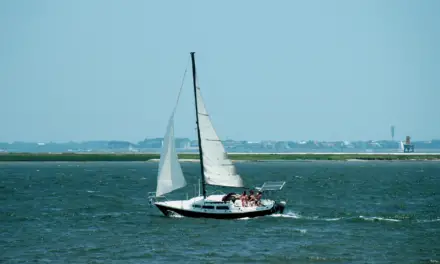Charleston’s coastline boasts a myriad of uninhabited islands that offer secluded beaches, rich wildlife, and unparalleled natural beauty. Accessible only by boat or kayak, these islands provide a unique escape from the bustling city life. This guide details ten of the most captivating uninhabited islands in Charleston, offering insights into their distinct characteristics, access points, and what visitors can expect.

1. Bird Key: A Sanctuary for Seabirds
Location: Between Folly Island and Kiawah Island
Bird Key is a protected seabird sanctuary, making it a prime destination for bird watchers and nature enthusiasts. Due to its status, access to Bird Key is restricted:
- Closed to the public from March 15 to October 15.
- Accessible below the high-water tidal line from October 16 to March 14.
Visitors can reach Bird Key by launching from various points along the Kiawah River and Stono River, including the Kiawah Island Parkway kayak put-in and the Sol Legare Public Boat Landing.
2. Bulls Island: The Remote Retreat
Location: North of Capers Island
Bulls Island is renowned for its boneyard beach and remote ambiance. The island is less frequented than its neighbor Capers Island, offering solitude to its visitors. Accessible primarily via the Bulls Island Ferry, adventurers can also navigate the Intracoastal Waterway (ICW) or depart from the Buck Hall Boat Landing. Kayakers should note the extremely shallow areas in Bulls Bay at low tide.
3. Deveaux Bank: A Haven for Nesting Birds
Location: Mouth of the North Edisto River
Deveaux Bank, another seabird sanctuary managed by the South Carolina Department of Natural Resources (SCDNR), is accessible year-round with specific areas designated for limited recreational use. Visitors should adhere to the following regulations:
- Intertidal zone closed from March 15 to October 15 for nesting birds.
- No dogs or camping allowed year-round.
Launch points include Bohicket Marina, Dawhoo Boat Landing, and Steamboat Landing.
4. Cape Romain and Cape Island: The Untouched Wilderness
Location: North across Bulls Bay from Bulls Island
Cape Romain and Cape Island offer some of the most isolated and pristine environments in the Charleston area. Accessible year-round, these islands provide a rare opportunity for visitors to experience unspoiled nature. The journey typically starts from Buck Hall Boat Landing, navigating the ICW northward.
5. Capers Island: The Popular Escape
Location: Atlantic Ocean, near Isle of Palms
Capers Island is a favorite among locals and visitors alike, known for its beautiful beach and opportunities for shelling and shark tooth hunting. Most visitors anchor on the island’s southern tip, arriving by boat from the Isle of Palms Marina or other points along the ICW. Despite its popularity, Capers Island remains remote, requiring careful planning regarding tides and beaching risks.
6. Cat Island: The Hidden Gem
Location: Up the Wando River from Charleston Harbor
Cat Island, although small, is a well-known spot for shark tooth hunting. Its accessibility makes it a convenient destination for a quick retreat. The island can be explored entirely on foot within minutes, offering a quaint and intimate experience.
7. Morgan Island: The Monkey Island
Location: Near Beaufort
Morgan Island is unique due to its population of around 4,000 rhesus monkeys. Federally protected, visitors are prohibited from setting foot on the island or disturbing the monkeys. Boaters and kayakers can view the monkeys from the water, departing from Eddings Point Landing or Sam’s Point Boat Landing.
8. Morris Island: Historical and Picturesque
Location: North of Folly Beach
Morris Island offers stunning views of the Morris Island Lighthouse and is a prime spot for shelling and shark tooth hunting. Accessible by kayak or boat from the Folly River Boat Ramp, visitors can also enjoy a view of the lighthouse from the Lighthouse Inlet Heritage Preserve on Folly Island.
9. Otter Island: The Camping Destination
Location: Beyond the southern tip of Edisto Island
Otter Island is not only remote and beautiful but also allows camping from November 1 to March 31 with a permit from SCDNR. Boaters and kayakers can access the island from The Marina at Edisto Beach or the Live Oak Boat Landing, with options to navigate the South Edisto River or Ashepoo River.
10. Wolf Island: The Inshore Retreat
Location: Stono River, near Rantowles Creek
Wolf Island features a small beach and a canopy of live oaks, offering a serene environment for visitors. Access points include John P. Limehouse Landing, Bulow Landing, and various points along the Stono River.
Visiting Charleston’s Uninhabited Islands: Practical Tips
For those without their own boat or kayak, several options exist to experience Charleston’s uninhabited islands:
- Rent a kayak on Folly Island to explore Bird Key or Morris Island.
- Take a guided tour to Bulls Island or Capers Island, departing from Buck Hall Boat Landing.
- Join a guided tour to Otter Island, departing from The Marina at Edisto Beach.




